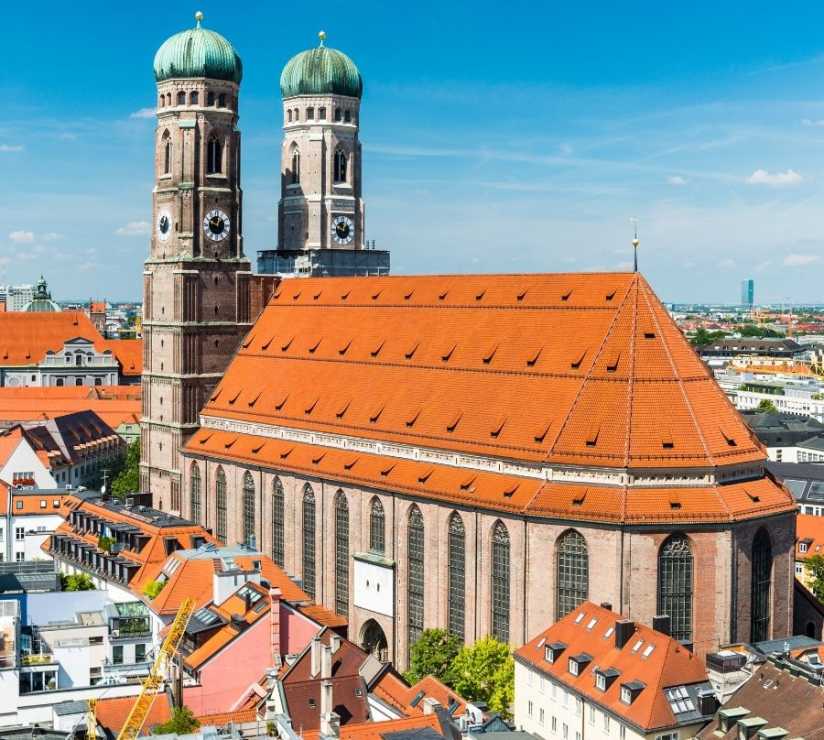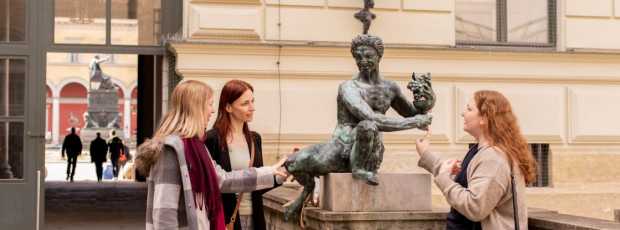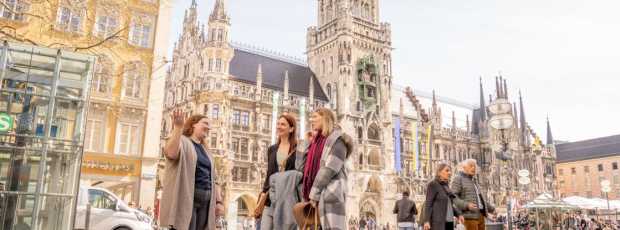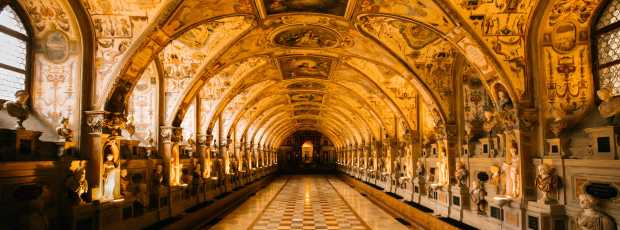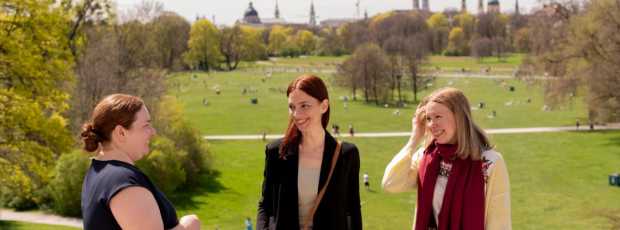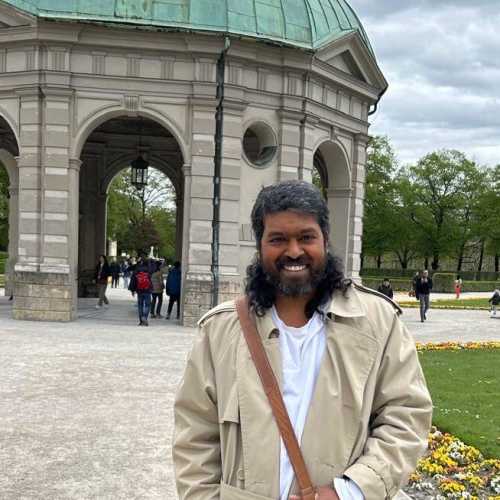Table Of Contents
- Why Leave Munich? (Even Just for a Day)
- Garmisch-Partenkirchen: Mountain Views, Cable Cars, and Germany's Highest Mountain
- Dachau: Confronting History with Respect
- Rothenburg ob der Tauber: Fairytale Facades & Night Watchman Tour
- Salzburg: Austria's Cultural Darling (and a Pretty Easy Trip)
- Neuschwanstein Castle: Worth the Hype?
- Nuremberg: History, City Walls & the Fembo House
- Eagle's Nest & Berchtesgaden: Scenic Politics
- Frequently Asked Questions
- Practical Advice: Public Transport, Regional Trains, and What I'd Skip
- Augsburg: Roman Roots and Renaissance Riches
- Regensburg: Medieval Marvel on the Danube River
- Oberammergau: Passion Play Village and Alpine Charm
- Landshut: Gothic Grandeur Without the Crowds
- Mittenwald: Alpine Village and Violin-Making Tradition
- Seasonal Strategies: When to Visit Each Destination
- Final Thoughts: Why These Day Trips Never Get Old
Why Leave Munich? (Even Just for a Day)
Look, I get it. Munich has everything you need, world-class museums, beer gardens that could double as UNESCO heritage sites, and enough Bavarian charm to make even the most cynical traveler crack a smile. But sometimes you wake up on a sunny day and think, "What if I actually left the city limits for once?" I’ve done the full range of Munich experiences more times than I can count, but they never get old, especially when paired with the right day trip.
The truth is, Munich serves as a fantastic base for exploring some of the most incredible destinations in southern Germany and beyond. I've been living here my entire life, and these day trips still surprise me. Not because they're hidden gems, most aren't, but because each one offers something genuinely different from our beloved Bavarian capital.
Whether you're craving mountain views, fairy tale castles, or a sobering history lesson, the best day trips from Munich are all within reach. Most destinations are accessible via public transport, though some require a bit more planning.
I've done them all multiple times, so let me save you from the tourist traps and point you toward the experiences actually worth your time. Day trips from Munich aren’t just for tourists, they’re how locals like me hit reset without ever packing a suitcase.
Garmisch-Partenkirchen: Mountain Views, Cable Cars, and Germany's Highest Mountain
Let's start with the obvious choice that somehow never gets old. Garmisch-Partenkirchen sits approximately an hour from Munich by regional trains, and it's where serious Alpine adventures begin. This isn't just another beautiful town, it's your gateway to the Zugspitze, Germany's highest mountain.
The journey takes you through Bavaria's most scenic countryside, and once you arrive, you have options. The cogwheel train up the Zugspitze is an experience in itself, a slow, steady climb that builds anticipation with every meter of elevation. At the summit, you're standing on Germany's highest mountain, looking out over four countries. On a clear day, the view is absolutely gorgeous.
But here's what most visitors miss: Garmisch-Partenkirchen offers excellent outdoor activities beyond the famous peak. The cable car systems provide access to hiking trails that range from gentle walks to challenging mountain routes. I prefer visiting during shoulder seasons when the crowds thin out, and you can actually enjoy the mountain views without fighting for photo opportunities.
Pro tip from my own experience: if you're planning this day trip from Munich, check weather conditions first. The Zugspitze can be shrouded in clouds while Munich enjoys sunshine, and there's nothing more disappointing than paying summit prices for a view of fog.
The Bavarian Alps surrounding Garmisch offer hiking trails for every fitness level. Even a short walk around the town reveals traditional architecture and mountain culture that feels worlds away from urban Munich. It's a perfect day trip for anyone seeking natural beauty and fresh air.
Dachau: Confronting History with Respect
This isn't the fun day you came here for, but it's an important one. The Dachau concentration camp site sits just a short train ride from Munich, easily accessible via public transportation. This concentration camp opened in 1933, making it one of the first and longest-operating camps of its kind.
I've visited multiple times, both alone and with visitors, and each experience carries weight. The memorial site preserves the history with careful attention to education and remembrance. You'll need at least two hours to properly visit the exhibitions and grounds, though many visitors spend longer.
The guided tour provides essential context that you won't get from wandering alone. The guides handle WWII history with appropriate gravity while making the information accessible and meaningful. It's not entertainment, it's education that demands respect and reflection.
Getting there requires only local trains from Munich's main train station, making it one of the most accessible day trips from Munich. The journey takes about half an hour each way, leaving plenty of time for a thorough visit.
What strikes me each time is how close this history sits to our daily lives. The Dachau concentration camp exists within Munich's suburban ring, connected by the same public transport system we use for routine errands. That proximity makes the history more immediate, more real.
This isn't a casual tourist attraction, but rather a crucial reminder. If you're serious about understanding the region's complete story, this day trip from Munich deserves a place on your itinerary.
Looking for a private city experience in Munich?
Explore the city with a local who plans a private day just for you; no groups, no scripts.
Rothenburg ob der Tauber: Fairytale Facades & Night Watchman Tour
Now for something completely different. Rothenburg ob der Tauber represents medieval towns at their most picture-perfect, sitting along Germany's romantic road like a storybook illustration come to life. The journey takes about two hours by regional trains, making it a longer but manageable day trip from Munich.
The half timbered houses here aren't museum pieces, they're actual buildings where people live and work. Walking through the old town feels like time travel, except with better coffee and functioning plumbing. The city walls remain largely intact, offering elevated views of the surrounding countryside and the town's red-tiled roofs.
Here's where things get interesting: the watchman tour happens every evening, led by a costumed guide who brings medieval history to life with humor and theatrical flair. It's cheesy in the best possible way, and even locals from nearby towns make the trip for this experience. The tour covers the town's history, legends, and the importance of night watchmen in medieval society.
The romantic road connection makes Rothenburg a popular stop, but don't let that deter you. Yes, it attracts crowds, especially during summer months, but early morning and late afternoon offer quieter moments for exploration.
What makes this one of the best day trips from Munich isn't just the preserved architecture, it's how the town balances historical preservation with modern life. Local shops sell everything from traditional crafts to contemporary goods, and restaurants serve both tourist-friendly fare and authentic regional cuisine.
The town hall dominates the market square, and climbing its tower rewards visitors with panoramic views. But honestly, the real pleasure comes from wandering the narrow streets and discovering small courtyards and hidden corners that don't appear in guidebooks.
Salzburg: Austria's Cultural Darling (and a Pretty Easy Trip)
Crossing the Austrian border for a day trip might sound ambitious, but Salzburg sits close enough to Munich that it feels like a natural extension of the region. The journey takes about two hours by train, and trust me, it's totally worth the slight time investment.
Salzburg's old town earned its UNESCO status for good reason. The baroque architecture creates dramatic backdrops along every street, and the Salzach River provides natural boundaries that keep the historic center compact and walkable. The fortress looming over the city center adds medieval drama to an already theatrical setting.
Cultural attractions here go beyond the obvious Mozart connections. Museums, concert halls, and art galleries offer year-round programming that rivals larger cities. The city center maintains its historical character while supporting a vibrant contemporary cultural scene.
If you visit Salzburg as a day trip from Munich, focus on the areas within walking distance of the train station. The old town spreads along the river, making navigation straightforward. The stone bridge connects both sides of the historic center, and most major attractions lie within this compact area.
Food culture here blends Austrian and German influences with Alpine touches. Local restaurants serve traditional dishes that feel familiar yet distinct from Bavarian cuisine. The coffee culture rivals Vienna's, and pastry shops display regional specialties worth sampling.
The fortress tour provides historical context and city views, but the real attraction is wandering the streets and absorbing the architectural details. Salzburg feels like a city that takes itself seriously without being stuffy, a rare combination that makes for memorable day trips.
Neuschwanstein Castle: Worth the Hype?
Let's address the elephant in the room. Neuschwanstein Castle attracts millions of visitors annually, making it one of Germany's most photographed landmarks. So is this fairy tale castle actually worth fighting the crowds?
Short answer: yes, but with caveats. King Ludwig II built this fantasy castle in the Bavarian Alps as his personal retreat, and the result is genuinely spectacular. The exterior architecture captures imaginations worldwide, and the interior rooms showcase 19th-century craftsmanship at its most elaborate.
The challenge isn't the castle itself, it's the logistics. Getting there requires either a guided tour, a rental car, or public transport connections that eat up significant time. Most organized day trips from Munich include transportation, but limit your time at the site.
Here's my strategy: combine Neuschwanstein with Linderhof Palace for a fuller King Ludwig II experience. Linderhof Palace sits closer to Munich and receives fewer visitors, allowing for more relaxed exploration. The lovely gardens surrounding the palace showcase Ludwig's taste for elaborate landscaping and architectural fantasies.
Both sites represent Ludwig's eccentric vision of royal power expressed through architectural excess. Linderhof palace feels more intimate than Neuschwanstein, while still delivering the fairy tale castle experience that draws visitors from around the world.
The journey takes longer than other day trips from Munich, but the combination of natural scenery and architectural wonder creates lasting memories. If you're doing this trip, buy tickets in advance and prepare for crowds, especially during peak season.
My honest assessment: Neuschwanstein deserves its reputation, but managing expectations helps ensure enjoyment. It's a fantastic place to visit once, especially if you appreciate 19th-century romanticism and don't mind sharing the experience with international tour groups.
What if your day in Munich was planned by someone who knows it — and you?
City Unscripted matches you with a local host who creates a private experience based on your interests, not a set route.
Nuremberg: History, City Walls & the Fembo House
Nuremberg offers a more complex historical narrative than many Bavarian destinations. This important city played crucial roles in medieval trade, Nazi propaganda, and post-war justice, creating layers of history that reward careful exploration.
The medieval city walls remain largely intact, encircling an old town that survived wartime bombing better than many German cities. Walking these fortifications provides elevated perspectives on the city center and surrounding areas. The walls themselves tell stories of medieval defense systems and urban development over centuries.
The fembo house represents one of Germany's finest examples of Renaissance architecture, housing a city museum that explains Nuremberg's evolution from medieval trade center to modern metropolis. The building itself demonstrates architectural techniques and decorative arts from the 16th century.
But Nuremberg's 20th-century history demands attention too. Nazi rally grounds and the courthouse where war crimes trials occurred provide sobering counterpoints to the medieval charm. These sites require respectful visiting, similar to the approach needed at Dachau.
The journey takes aproximately an hour by regional trains, making Nuremberg easily accessible for day trips from Munich. The train station sits within walking distance of the old town, eliminating the need for additional transportation.
Local food culture reflects Franconian traditions distinct from Bavarian cuisine. Nuremberg sausages, local beer varieties, and regional specialties provide authentic dining experiences beyond typical tourist fare.
This city rewards visitors who appreciate historical complexity. Unlike some destinations that offer single-note attractions, Nuremberg demands engagement with multiple time periods and competing narratives. It's not always comfortable, but it's always meaningful.
Eagle's Nest & Berchtesgaden: Scenic Politics
The Eagle's Nest presents one of southern Germany's most morally complex attractions. This mountaintop building served as Hitler's retreat, but its current incarnation as a restaurant and historical site attempts to balance tourism with historical responsibility.
Getting there requires advance planning. The special bus service operates seasonally, and weather conditions affect access regularly. The journey takes you through stunning Alpine scenery that would be breathtaking regardless of the destination's historical significance.
The view from the Eagle's Nest encompasses the Bavarian Alps and extends into Austria, providing some of the region's most dramatic mountain views. On clear days, the panorama justifies the complicated journey, even setting aside historical considerations.
Berchtesgaden itself offers attractions beyond the controversial mountaintop site. The salt mine provides underground tours that explain centuries of mining history and traditional extraction techniques. These guided tours include boat rides through underground chambers and slides that connect different levels.
The town sits near the Austrian border, making it one of the more distant day trips from Munich. However, the combination of natural beauty, historical sites, and unique attractions creates a full-day experience that justifies the travel time.
Public transport reaches Berchtesgaden, though connections require careful timing. Most visitors find organized tours more convenient for accessing the Eagle's Nest specifically, as individual travel involves multiple transportation changes.
This destination forces visitors to confront history while appreciating natural beauty. The Eagles Nest site handles its complicated legacy with informational displays and historical context, but the spectacular setting creates cognitive dissonance that some visitors find uncomfortable.
My advice: approach this as a historical education rather than casual sightseeing. The combination of natural beauty and dark history creates a unique experience, but it requires thoughtful engagement rather than superficial tourism.
Frequently Asked Questions
1. Do I need to book day trip tickets in advance? For popular destinations like Neuschwanstein Castle and the Eagle's Nest, advance booking is essential, especially during peak season. The Zugspitze cable car and Dachau guided tours also benefit from advance reservations. However, destinations like Augsburg, Regensburg, and Nuremberg can usually be visited spontaneously.
2. What is the Bayern-Ticket, and how much can it save me? The Bayern-Ticket is a day pass for unlimited travel on regional trains throughout Bavaria. It costs around €27-29 for one person (prices vary by day) and covers most destinations mentioned in this guide. It's significantly cheaper than buying individual tickets, especially for longer journeys like Munich to Nuremberg or Salzburg.
3. Which day trips are suitable for families with young children? Neuschwanstein Castle (though crowded), the Zugspitze cable car experience, and the Berchtesgaden salt mines are particularly family-friendly. Rothenburg ob der Tauber's fairy-tale atmosphere also appeals to children. Dachau is recommended for teenagers and older due to its serious historical content.
4. Can I do multiple destinations in one day? While tour companies offer combinations, it's generally better to focus on one destination for a quality experience. The only practical combination is Neuschwanstein and Linderhof Palace, as they're relatively close together and share the King Ludwig II theme.
5. Which destinations are accessible for travelers with mobility limitations? Salzburg's compact old town, Augsburg, and parts of Nuremberg are relatively flat and accessible. The Zugspitze has cable car access to the summit. However, medieval towns like Rothenburg have cobblestones and steep areas, and castle visits often involve significant walking and stairs.
6. What's the best day trip for first-time visitors to Munich? Neuschwanstein Castle or Salzburg typically offer the most "wow factor" for first-timers. Both provide quintessential experiences - fairy-tale castles or Austrian cultural charm - that complement Munich's urban attractions.
7. Which destinations are open on Sundays and German holidays? Tourist attractions like castles, cable cars, and natural sites typically remain open. However, shops in smaller towns may be closed. Restaurants and cafes in tourist areas usually stay open, but it's worth checking specific attractions' holiday schedules.
8. What should I pack for a day trip to the mountains? Bring layers even in summer, as mountain weather changes quickly. Sturdy walking shoes are essential. Pack sunscreen and sunglasses for high altitudes, rain gear, and water. Mountain restaurants exist but can be expensive, so consider bringing snacks.
9. Which destinations are best in bad weather? Nuremberg and Augsburg offer numerous indoor attractions and museums. The Dachau memorial site has indoor exhibitions. The Berchtesgaden salt mines provide an underground experience unaffected by weather. Skip mountain destinations like Zugspitze or Eagle's Nest in poor visibility.
10. How early should I start my day trip? For popular destinations like Neuschwanstein, leaving Munich by 8 am helps beat crowds. Mountain destinations benefit from early starts to avoid afternoon clouds. For cities like Salzburg or Nuremberg, a 9 am departure still provides a full day of exploration.
11. Are these day trips significantly cheaper than staying overnight? Day trips save on accommodation costs but may feel rushed for distant destinations. Consider staying overnight in Salzburg or Garmisch-Partenkirchen if you want a relaxed pace. However, Munich's excellent transport connections make day trips practical and cost-effective for most destinations.
12. What's the most underrated day trip from Munich? Landshut and Augsburg receive far fewer tourists despite their historical significance and beautiful architecture. Regensburg also offers an authentic medieval experience without Rothenburg's crowds. These destinations provide excellent value and a genuine local atmosphere.
13. Can I use my German rail pass for these trips? Most German rail passes cover regional trains to these destinations. However, private operations like the Zugspitze cogwheel train require separate tickets. Always verify coverage for specific mountain railways and special tourist trains.
Tip
We match you with the right host, not just any guide.Want to experience the real Munich with someone who lives there?
A fully private experience, planned and led by a local host who tailors the day to you
Practical Advice: Public Transport, Regional Trains, and What I'd Skip
After years of exploring day trips from Munich, I've learned which transportation methods work best for different destinations. Here's what actually works versus what sounds good in theory.
Public transport handles most destinations efficiently. The Bayern-Ticket provides unlimited regional train travel for a full day, covering most day trips at a reasonable cost. Regional trains connect Munich to major destinations like Nuremberg, Salzburg, and Garmisch-Partenkirchen without requiring advance reservations.
Local trains work well for nearby attractions like Dachau, while longer destinations benefit from regional train connections. The key is understanding which routes require transfers and building buffer time into your schedule.
Car rentals make sense for destinations like Neuschwanstein or the Eagle's Nest, where public transport involves multiple connections and limited scheduling. However, parking challenges and traffic congestion during peak seasons can offset the convenience benefits.
What I'd skip: any day trip that promises to cover multiple major attractions in a single day. These marathon tours sacrifice depth for breadth, leaving you with Instagram photos but minimal actual experience. Better to choose one or two destinations and explore them properly.
The BMW museum gets mentioned in many day trip lists, but it's actually within Munich itself. Same with other sites that travel writers include to pad their lists. Stick to destinations that actually require leaving the city for authentic day trip experiences.
Weather affects mountain destinations significantly. Check conditions before committing to Zugspitze or Eagles Nest trips, as cloud cover can eliminate the primary attraction. Have backup indoor options for days when outdoor activities don't cooperate.
My strategy involves choosing day trips based on personal interests rather than checking items off tourist lists. Some medieval towns along the romantic road offer similar experiences to Rothenburg with fewer crowds. Some Alpine destinations provide mountain views without Neuschwanstein's complexity.
The best day trips from Munich depend on what you're seeking. Historical education, natural beauty, architectural wonder, or cultural immersion, each requires different approaches and expectations. But that's what makes this region such a fantastic base for exploration.
Augsburg: Roman Roots and Renaissance Riches
Here's a day trip from Munich that most tourists overlook, which is exactly why I recommend it. Augsburg sits about half hour from Munich by regional trains, making it one of the most convenient destinations for spontaneous exploration. This town dates back to the Roman Emperor's era, with the Fuggerei representing the world's oldest social housing complex.
The town hall stands as one of Germany's finest examples of Renaissance civic architecture. The Golden Hall inside demonstrates the craftsmanship that made Augsburg an important city during the Holy Roman Empire. Unlike crowded tourist destinations, you can actually spend time appreciating architectural details without fighting for viewing space.
Regensburg: Medieval Marvel on the Danube River
Regensburg deserves recognition as one of the best day trips from Munich for medieval architecture enthusiasts. The journey takes about an hour by regional trains, delivering you to a UNESCO World Heritage old town that survived World War II virtually intact.
The stone bridge crossing the Danube River has connected both sides of the city since the 12th century. This engineering marvel still carries pedestrian traffic today. The cathedral dominates the skyline with Gothic spires, while medieval streets preserve their original layout.
What sets Regensburg apart is its university town energy that makes historical sites feel relevant rather than remote. Students fill cafes housed in medieval buildings, creating authentic urban fabric that made Regensburg significant in the first place.
Ready to plan your perfect day in Munich?
Start your experienceOberammergau: Passion Play Village and Alpine Charm
Oberammergau offers religious tradition, Alpine scenery, and artisan craftsmanship in one distinctive day trip from Munich. The journey takes about an hour drive through mountain landscapes, or slightly longer via public transport connections.
This lovely town gained international fame for its Passion Play, performed every ten years by local residents. The painted houses throughout showcase Lüftlmalerei folk art, where building exteriors become canvases for religious and secular scenes.
Woodcarving studios offer demonstrations where visitors observe traditional techniques still practiced by local artisans. The Bavarian Alps surrounding Oberammergau provide hiking opportunities from gentle valley walks to challenging mountain ascents.
Landshut: Gothic Grandeur Without the Crowds
Landshut represents everything I appreciate about thoughtful day trips from Munich, historical significance, architectural beauty, and authentic local atmosphere without overwhelming tourist infrastructure.
The old town stretches along a single main street that climbs toward Trausnitz Castle. St. Martin's Church boasts the world's tallest brick tower, a Gothic achievement with vaulted ceilings that seem to defy gravity. The town hall and surrounding merchant houses showcase medieval wealth and prosperity.
What sets Landshut apart is its integration of historical preservation with contemporary function. Local shops and services occupy centuries-old buildings, maintaining streetscapes that feel alive rather than preserved.
Mittenwald: Alpine Village and Violin-Making Tradition
Mittenwald combines spectacular mountain settings with unique cultural traditions. The journey takes approximately an hour drive through Alpine landscapes, or connections via regional trains.
This mountain village gained fame for violin-making traditions that began in the 17th century. Local workshops still produce instruments for musicians worldwide. The painted houses create an outdoor gallery of Alpine folk art, while the Bavarian alps provide hiking trails for every fitness level.
The proximity to the Austrian border adds international flavor without passport complications. Local restaurants serve Alpine cuisine reflecting both German and Austrian influences.
Seasonal Strategies: When to Visit Each Destination
After years of exploring these day trips from Munich throughout different seasons, timing can make or break certain experiences. Spring brings fewer crowds but unpredictable weather. Mountain destinations like Garmisch-Partenkirchen remain partially closed due to snow, while medieval towns like Rothenburg show their best colors.
Summer delivers peak mountain conditions but maximum crowds. Neuschwanstein castle becomes nearly unbearable, while lesser-known sites like Augsburg remain manageable. Fall provides ideal conditions for most day trips, clear mountain views, autumn colors, and reduced crowds. Winter transforms destinations completely, offering Christmas markets but closing some attractions like the Eagles Nest entirely.
Final Thoughts: Why These Day Trips Never Get Old
Living in Munich for decades, I still find reasons to take these day trips. Not because I've forgotten what they're like, but because each visit reveals different details or seasonal changes that keep the experiences fresh.
The variety available within a few hours of travel means you never get stuck in routine tourism. Medieval towns, Alpine peaks, historical sites, and cultural destinations provide options for every mood and interest level. Some days call for challenging mountain hikes, others for quiet museum visits or architectural appreciation.
What makes Munich special as a travel base isn't just the city itself, it's the access to this incredible diversity of experiences. Few cities offer such convenient connections to mountains, history, culture, and natural beauty. These day trips complement rather than compete with Munich's own attractions, creating a richer overall travel experience.
Whether you're visiting for a week or living here permanently, these destinations provide perspective on southern Germany and central europe that goes beyond any single city. They're reminders that the best travel experiences often happen when you step outside familiar boundaries, even if just for a day.
The combination of efficient public transport, diverse attractions, and manageable distances makes Munich the fantastic base that keeps drawing travelers back. Each day trip offers glimpses into different aspects of Bavarian and Alpine culture, from medieval trade routes to contemporary artisan traditions.
So next time you find yourself with a sunny day and restless energy, consider leaving Munich behind for a few hours. The city will be here when you return, probably with a fresh appreciation for both the journey and the homecoming. These amazing places deserve more than single visits, they reward returning travelers with deeper understanding and continued discoveries.
What if your day in Munich was planned by someone who knows it — and you?
City Unscripted matches you with a local host who creates a private experience based on your interests, not a set route.
Want to experience the real Munich with someone who lives there?
A fully private experience, planned and led by a local host who tailors the day to you
